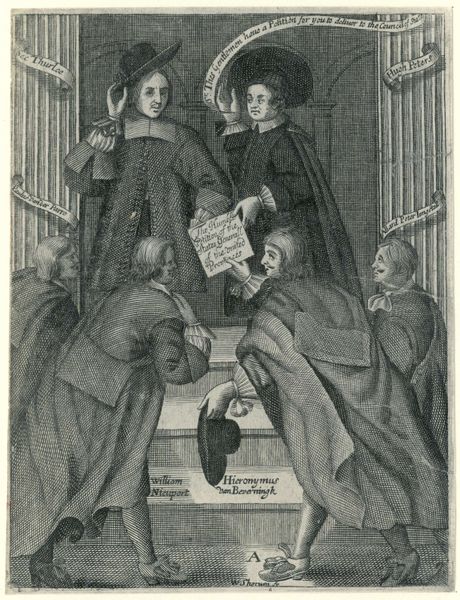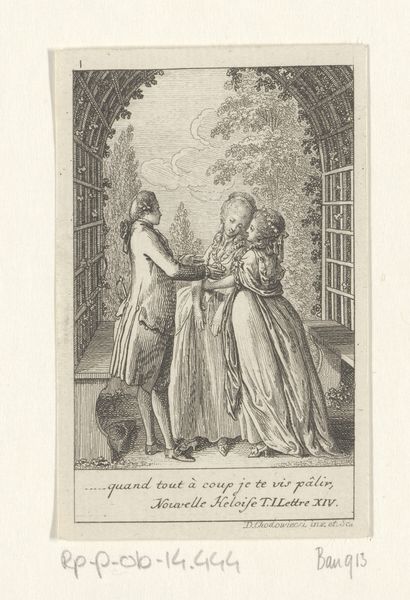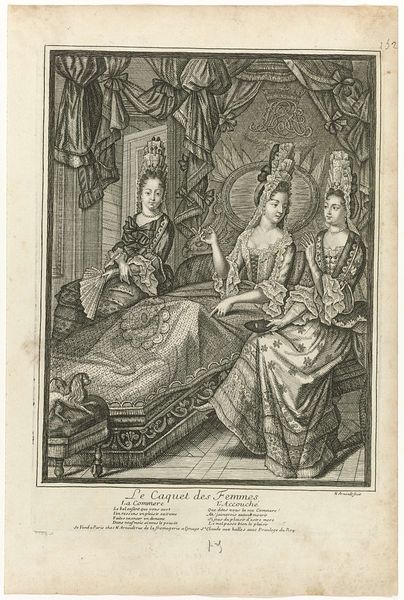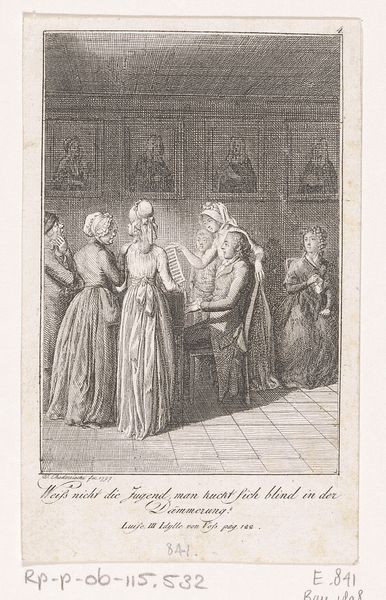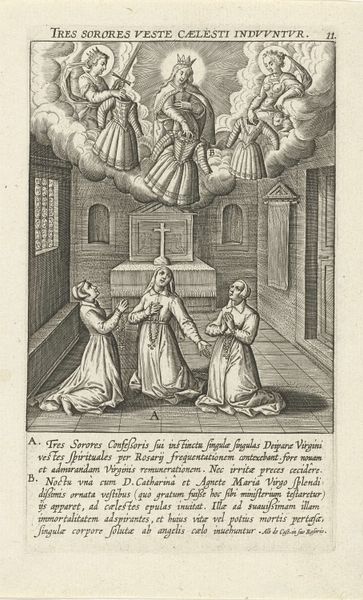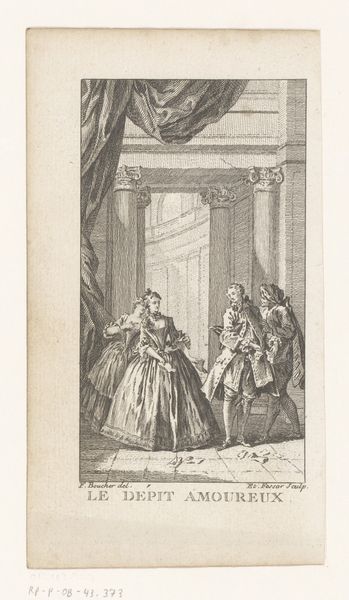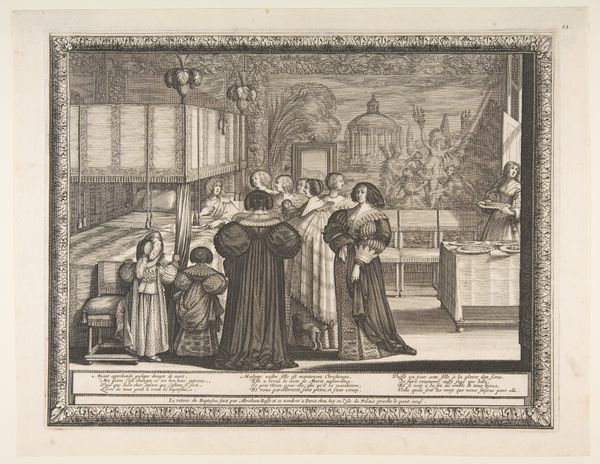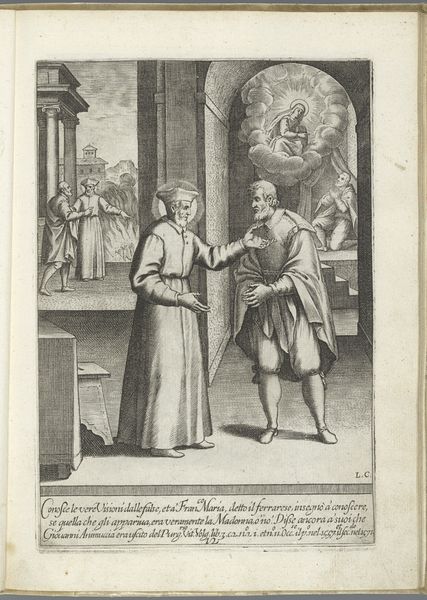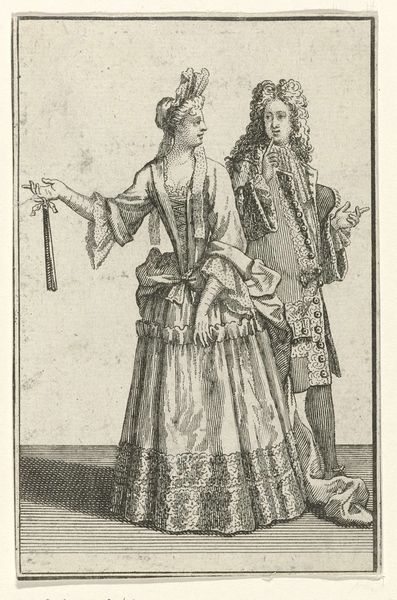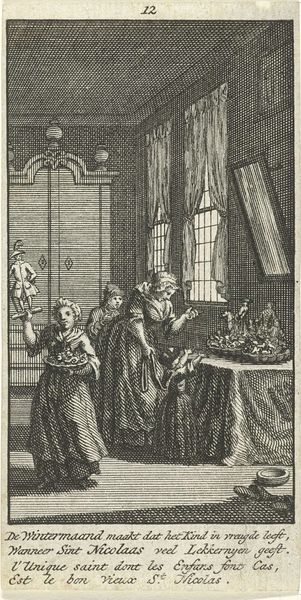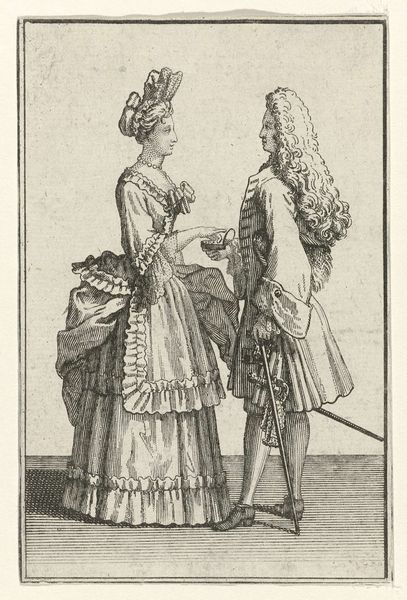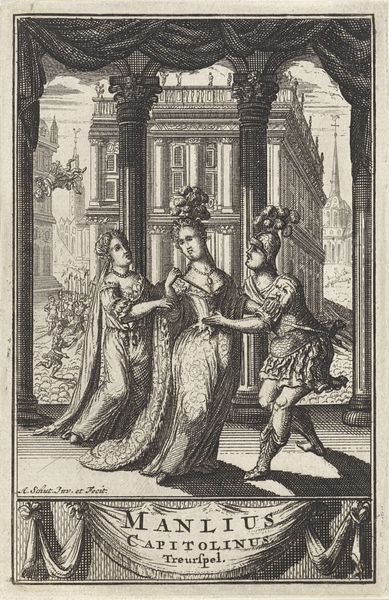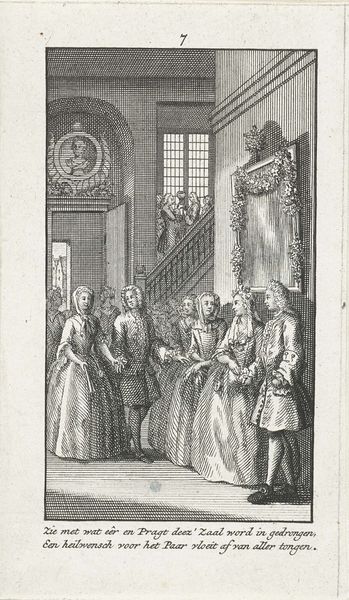
print, engraving
#
portrait
#
baroque
# print
#
old engraving style
#
figuration
#
line
#
history-painting
#
engraving
Dimensions: height 136 mm, width 83 mm
Copyright: Rijks Museum: Open Domain
Curator: This print from 1721, currently held at the Rijksmuseum, is entitled "Conversation between Elizabeth I of England and Christina I of Sweden." Editor: My immediate impression is one of stark formality. The figures, rigidly posed, are defined by precise lines against a strangely dreamlike backdrop. Curator: Indeed. The work utilizes line engraving, a technique that lends itself to detailed figuration, which we certainly see here. However, it’s also important to look beyond the representational aspect. Consider, for example, the allegorical elements—the cherub with a scorpion hovering above. Scorpions represent danger. The engraving appears to depict an exchange, or a contrast of destinies, and the visual symbolism emphasizes hidden tensions, despite their visible exchange. Editor: I agree. Formally, the composition seems built on contrasts. Elizabeth's ruffled, enclosed collar stands against Christina's more fluid, draping attire. The darkness in the Queen of Sweden and the relative brightness and volume of Queen Elizabeth suggest different approaches to life and governance. The almost diagrammatic quality allows the line itself to function as a carrier of meaning, dividing their spaces, emphasizing the nature of light, darkness and weight. Curator: Precisely! There's a narrative unfolding through symbolic shorthand. Think about the context: both queens famously defied expectations for women in power. What cultural weight does that conversation bear? Consider also that one queen died over 100 years before the other lived, which indicates the meeting to be an imagined, and carefully constructed narrative. Their intellectual strength challenged conventional norms and now it's as if the engraver is creating an enduring image to explore the dynamics between power, perception and self-expression. Editor: The print functions less as a record of fact than a symbolic tableau. Its enduring power, even centuries later, hinges on its structured form. The semiotic structure helps convey tension through contrasting symbols. Curator: Yes, this detailed line engraving succeeds as both history painting and, possibly, social commentary. Editor: Analyzing the visual organization allowed us to see layers of meaning in their construction of power. Curator: Indeed. These lines serve to keep their stories resonating through generations.
Comments
No comments
Be the first to comment and join the conversation on the ultimate creative platform.
